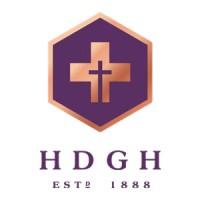
Hôtel-Dieu Grace Healthcare Company Cyber Security Posture
hdgh.orgWelcome to Hôtel-Dieu Grace Healthcare (HDGH), where we are committed to improving the health of the community and the region through service, innovation and a commitment to excellence and stewardship. Our goal is to meet the practical, clinical, emotional, and spiritual needs of the people we serve. We believe that spirituality and faith are an integral part of healthcare. Therefore, our chaplains are an integral part of the healthcare team helping to meet emotional and spiritual needs while clinicians respond to health needs. HDGH specializes in healthy aging and mobility which includes rehabilitation services and complex continuing care. As well, HDGH is a provider of neuro-behavioural health, specializing in adult mental health, children’s mental health and crisis. HDGH delivers over 25 programs and is located at the sprawling 32 acre Tayfour Campus in Windsor, Ontario.
HGH Company Details
hoteldieugracehealthcare
552 employees
3359.0
62
Hospitals and Health Care
hdgh.org
Scan still pending
HÔT_2975940
In-progress
Between 800 and 900
This score is AI-generated and less favored by cyber insurers, who prefer the TPRM score.
 HGH Global Score
HGH Global Score.png)

Hôtel-Dieu Grace Healthcare Company Scoring based on AI Models
| Model Name | Date | Description | Current Score Difference | Score |
|---|---|---|---|---|
| AVERAGE-Industry | 03-12-2025 | This score represents the average cybersecurity rating of companies already scanned within the same industry. It provides a benchmark to compare an individual company's security posture against its industry peers. | N/A | Between 800 and 900 |
Hôtel-Dieu Grace Healthcare Company Cyber Security News & History
| Entity | Type | Severity | Impact | Seen | Url ID | Details | View |
|---|---|---|---|---|---|---|---|
| Hôtel-Dieu Grace Healthcare | Data Leak | 60 | 3 | 10/2023 | HTE20015124 | Link | |
Rankiteo Explanation : Attack with significant impact with internal employee data leaksDescription: A cyberattack that affected five hospitals in Southwest Ontario prompted Michael Garron Hospital to disclose a data security incident. Patient records and various internet services were impacted by the attacks on Windsor Regional Hospital, Erie Shores HealthCare, Hôtel-Dieu Grace Healthcare, Bluewater Health, and the Chatham-Kent Health Alliance. All of these hospitals use the same IT vendor, and the Ministry of Health has confirmed the vulnerability that affected them. The ministry is convinced that TransForm SSO has and continues to take proper steps in response to this event. | |||||||
Hôtel-Dieu Grace Healthcare Company Subsidiaries

Welcome to Hôtel-Dieu Grace Healthcare (HDGH), where we are committed to improving the health of the community and the region through service, innovation and a commitment to excellence and stewardship. Our goal is to meet the practical, clinical, emotional, and spiritual needs of the people we serve. We believe that spirituality and faith are an integral part of healthcare. Therefore, our chaplains are an integral part of the healthcare team helping to meet emotional and spiritual needs while clinicians respond to health needs. HDGH specializes in healthy aging and mobility which includes rehabilitation services and complex continuing care. As well, HDGH is a provider of neuro-behavioural health, specializing in adult mental health, children’s mental health and crisis. HDGH delivers over 25 programs and is located at the sprawling 32 acre Tayfour Campus in Windsor, Ontario.
Access Data Using Our API

Get company history
.png)
HGH Cyber Security News
Hospital cyberattack investigation complete, no formal review needed
The hackers stole and disclosed the personal health information of hundreds of thousands of patients at Bluewater Health, Chatham-Kent Health ...
Southwestern Ontario hospital cyberattack cost organizations at least $7.5M
The fall cyberattack forced people to postpone or reschedule surgeries and appointments at Windsor Regional Hospital, Erie Shores HealthCare ...
Windsor hospital still months away from full cyberattack recovery
All five affected hospitals have collaborated to bring systems back online after the October cyberattack that targeted their shared service ...
Cyberattack recovery costs hit $8.9M for SW Ontario hospitals — so far
The Windsor Star reported in November that the hackers demanded a ransom of about US$8 million, which the hospitals refused to pay.
Bluewater Health Hospitals Experience Cyberattack: Daixin Team Claims Responsibility
Bluewater Health, a prominent hospital network in Ontario, Canada, has fallen victim to an alleged cyberattack, affecting several hospitals, ...
Toronto hospital confirms data security incident
Michael Garron Hospital reported its data security incident after five southwestern Ontario hospitals were hit by a cyberattack last week, ...
Two months after Ontario hospital cyberattack, many patients are left in limbo
The hospitals confirmed on Oct. 31 that they had fallen victim to a ransomware attack by cybercriminals who infiltrated their computer systems ...
Cyberattack at 5 southwestern Ontario hospitals leaves patients awaiting care
Cyberattack at 5 southwestern Ontario hospitals leaves patients awaiting care · The attack on 5 area hospitals was announced Monday evening.
Five Ontario hospitals say data stolen in cyberattack has been published online
Data stolen in a ransomware attack targeting half-a-dozen Ontario hospitals and healthcare institutions have been published online, ...

HGH Similar Companies
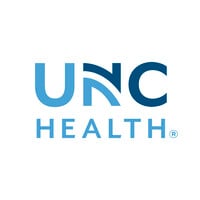
UNC Health
Our mission is to improve the health and well-being of North Carolinians and others whom we serve. We accomplish this by providing leadership and excellence in the interrelated areas of patient care, education and research. UNC Health and its 33,000 employees, continue to serve as North Carolina’s
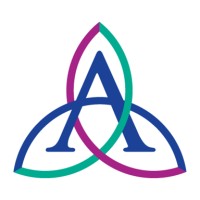
Ascension
Ascension is one of the nation’s leading non-profit and Catholic health systems, with a Mission of delivering compassionate, personalized care to all with special attention to persons living in poverty and those most vulnerable. In FY2024, Ascension provided $2.1 billion in care of persons living in
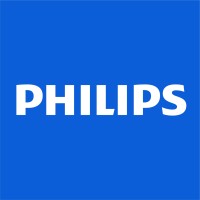
Philips
Over the past decade we have transformed into a focused leader in health technology. At Philips, our purpose is to improve people’s health and well-being through meaningful innovation. We aim to improve 2.5 billion lives per year by 2030, including 400 million in underserved communities. We see h

COLISEE
Colisée, Europe's leading provider of care for the elderly, favours a person-centred approach to caring for the elderly, emphasising the importance of listening and respect. Since March 2021, as a company with a mission, Colisée has been committed to promoting quality ageing, based on three pill
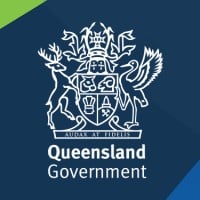
Queensland Health
Queensland Health is the state's largest healthcare provider. We are committed to ensuring all Queenslanders have access to a range of public healthcare services aimed at achieving good health and well-being. Through a network of 16 Hospital and Health Services, as well as the Mater Hospitals, Quee
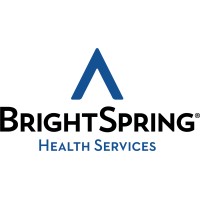
BrightSpring Health Services
BrightSpring is the parent company of a family of services and brands that provides clinical, nonclinical, pharmacy and ancillary care services for people of all ages, health and skill levels across home and community settings. The company is a leading provider of diversified home and community-ba

Frequently Asked Questions (FAQ) on Cybersecurity Incidents
HGH CyberSecurity History Information
Total Incidents: According to Rankiteo, HGH has faced 1 incidents in the past.
Incident Types: The types of cybersecurity incidents that have occurred include ['Data Leak'].
Total Financial Loss: The total financial loss from these incidents is estimated to be {total_financial_loss}.
Cybersecurity Posture: The company's overall cybersecurity posture is described as Welcome to Hôtel-Dieu Grace Healthcare (HDGH), where we are committed to improving the health of the community and the region through service, innovation and a commitment to excellence and stewardship. Our goal is to meet the practical, clinical, emotional, and spiritual needs of the people we serve. We believe that spirituality and faith are an integral part of healthcare. Therefore, our chaplains are an integral part of the healthcare team helping to meet emotional and spiritual needs while clinicians respond to health needs. HDGH specializes in healthy aging and mobility which includes rehabilitation services and complex continuing care. As well, HDGH is a provider of neuro-behavioural health, specializing in adult mental health, children’s mental health and crisis. HDGH delivers over 25 programs and is located at the sprawling 32 acre Tayfour Campus in Windsor, Ontario..
Detection and Response: The company detects and responds to cybersecurity incidents through {description_of_detection_and_response_process}.
Incident Details
Incident 1: Ransomware Attack
Title: {Incident_Title}
Description: {Brief_description_of_the_incident}
Date Detected: {Detection_Date}
Date Publicly Disclosed: {Disclosure_Date}
Date Resolved: {Resolution_Date}
Type: {Type_of_Attack}
Attack Vector: {Attack_Vector}
Vulnerability Exploited: {Vulnerability}
Threat Actor: {Threat_Actor}
Motivation: {Motivation}
Incident 2: Data Breach
Title: {Incident_Title}
Description: {Brief_description_of_the_incident}
Date Detected: {Detection_Date}
Date Publicly Disclosed: {Disclosure_Date}
Date Resolved: {Resolution_Date}
Type: {Type_of_Attack}
Attack Vector: {Attack_Vector}
Vulnerability Exploited: {Vulnerability}
Threat Actor: {Threat_Actor}
Motivation: {Motivation}
Common Attack Types: As of now, the company has not encountered any reported incidents involving common cyberattacks.
Identification of Attack Vectors: The company identifies the attack vectors used in incidents through {description_of_identification_process}.
Impact of the Incidents
Incident 1: Ransomware Attack
Financial Loss: {Financial_Loss}
Data Compromised: {Data_Compromised}
Systems Affected: {Systems_Affected}
Downtime: {Downtime}
Operational Impact: {Operational_Impact}
Conversion Rate Impact: {Conversion_Rate_Impact}
Revenue Loss: {Revenue_Loss}
Customer Complaints: {Customer_Complaints}
Brand Reputation Impact: {Brand_Reputation_Impact}
Legal Liabilities: {Legal_Liabilities}
Identity Theft Risk: {Identity_Theft_Risk}
Payment Information Risk: {Payment_Information_Risk}
Incident 2: Data Breach
Financial Loss: {Financial_Loss}
Data Compromised: {Data_Compromised}
Systems Affected: {Systems_Affected}
Downtime: {Downtime}
Operational Impact: {Operational_Impact}
Conversion Rate Impact: {Conversion_Rate_Impact}
Revenue Loss: {Revenue_Loss}
Customer Complaints: {Customer_Complaints}
Brand Reputation Impact: {Brand_Reputation_Impact}
Legal Liabilities: {Legal_Liabilities}
Identity Theft Risk: {Identity_Theft_Risk}
Payment Information Risk: {Payment_Information_Risk}
Average Financial Loss: The average financial loss per incident is {average_financial_loss}.
Commonly Compromised Data Types: The types of data most commonly compromised in incidents are {list_of_commonly_compromised_data_types}.
Incident 1: Ransomware Attack
Entity Name: {Entity_Name}
Entity Type: {Entity_Type}
Industry: {Industry}
Location: {Location}
Size: {Size}
Customers Affected: {Customers_Affected}
Incident 2: Data Breach
Entity Name: {Entity_Name}
Entity Type: {Entity_Type}
Industry: {Industry}
Location: {Location}
Size: {Size}
Customers Affected: {Customers_Affected}
Response to the Incidents
Incident 1: Ransomware Attack
Incident Response Plan Activated: {Yes/No}
Third Party Assistance: {Yes/No}
Law Enforcement Notified: {Yes/No}
Containment Measures: {Containment_Measures}
Remediation Measures: {Remediation_Measures}
Recovery Measures: {Recovery_Measures}
Communication Strategy: {Communication_Strategy}
Adaptive Behavioral WAF: {Adaptive_Behavioral_WAF}
On-Demand Scrubbing Services: {On_Demand_Scrubbing_Services}
Network Segmentation: {Network_Segmentation}
Enhanced Monitoring: {Enhanced_Monitoring}
Incident 2: Data Breach
Incident Response Plan Activated: {Yes/No}
Third Party Assistance: {Yes/No}
Law Enforcement Notified: {Yes/No}
Containment Measures: {Containment_Measures}
Remediation Measures: {Remediation_Measures}
Recovery Measures: {Recovery_Measures}
Communication Strategy: {Communication_Strategy}
Adaptive Behavioral WAF: {Adaptive_Behavioral_WAF}
On-Demand Scrubbing Services: {On_Demand_Scrubbing_Services}
Network Segmentation: {Network_Segmentation}
Enhanced Monitoring: {Enhanced_Monitoring}
Incident Response Plan: The company's incident response plan is described as {description_of_incident_response_plan}.
Third-Party Assistance: The company involves third-party assistance in incident response through {description_of_third_party_involvement}.
Data Breach Information
Incident 2: Data Breach
Type of Data Compromised: {Type_of_Data}
Number of Records Exposed: {Number_of_Records}
Sensitivity of Data: {Sensitivity_of_Data}
Data Exfiltration: {Yes/No}
Data Encryption: {Yes/No}
File Types Exposed: {File_Types}
Personally Identifiable Information: {Yes/No}
Prevention of Data Exfiltration: The company takes the following measures to prevent data exfiltration: {description_of_prevention_measures}.
Handling of PII Incidents: The company handles incidents involving personally identifiable information (PII) through {description_of_handling_process}.
Ransomware Information
Incident 1: Ransomware Attack
Ransom Demanded: {Ransom_Amount}
Ransom Paid: {Ransom_Paid}
Ransomware Strain: {Ransomware_Strain}
Data Encryption: {Yes/No}
Data Exfiltration: {Yes/No}
Ransom Payment Policy: The company's policy on paying ransoms in ransomware incidents is described as {description_of_ransom_payment_policy}.
Data Recovery from Ransomware: The company recovers data encrypted by ransomware through {description_of_data_recovery_process}.
Regulatory Compliance
Incident 1: Ransomware Attack
Regulations Violated: {Regulations_Violated}
Fines Imposed: {Fines_Imposed}
Legal Actions: {Legal_Actions}
Regulatory Notifications: {Regulatory_Notifications}
Incident 2: Data Breach
Regulations Violated: {Regulations_Violated}
Fines Imposed: {Fines_Imposed}
Legal Actions: {Legal_Actions}
Regulatory Notifications: {Regulatory_Notifications}
Regulatory Frameworks: The company complies with the following regulatory frameworks regarding cybersecurity: {list_of_regulatory_frameworks}.
Ensuring Regulatory Compliance: The company ensures compliance with regulatory requirements through {description_of_compliance_measures}.
Lessons Learned and Recommendations
Incident 1: Ransomware Attack
Lessons Learned: {Lessons_Learned}
Incident 2: Data Breach
Lessons Learned: {Lessons_Learned}
Incident 1: Ransomware Attack
Recommendations: {Recommendations}
Incident 2: Data Breach
Recommendations: {Recommendations}
Key Lessons Learned: The key lessons learned from past incidents are {list_of_key_lessons_learned}.
Implemented Recommendations: The company has implemented the following recommendations to improve cybersecurity: {list_of_implemented_recommendations}.
References
Additional Resources: Stakeholders can find additional resources on cybersecurity best practices at {list_of_additional_resources}.
Investigation Status
Incident 1: Ransomware Attack
Investigation Status: {Investigation_Status}
Incident 2: Data Breach
Investigation Status: {Investigation_Status}
Communication of Investigation Status: The company communicates the status of incident investigations to stakeholders through {description_of_communication_process}.
Stakeholder and Customer Advisories
Incident 1: Ransomware Attack
Stakeholder Advisories: {Stakeholder_Advisories}
Customer Advisories: {Customer_Advisories}
Incident 2: Data Breach
Stakeholder Advisories: {Stakeholder_Advisories}
Customer Advisories: {Customer_Advisories}
Advisories Provided: The company provides the following advisories to stakeholders and customers following an incident: {description_of_advisories_provided}.
Initial Access Broker
Incident 1: Ransomware Attack
Entry Point: {Entry_Point}
Reconnaissance Period: {Reconnaissance_Period}
Backdoors Established: {Backdoors_Established}
High Value Targets: {High_Value_Targets}
Data Sold on Dark Web: {Yes/No}
Incident 2: Data Breach
Entry Point: {Entry_Point}
Reconnaissance Period: {Reconnaissance_Period}
Backdoors Established: {Backdoors_Established}
High Value Targets: {High_Value_Targets}
Data Sold on Dark Web: {Yes/No}
Monitoring and Mitigation of Initial Access Brokers: The company monitors and mitigates the activities of initial access brokers through {description_of_monitoring_and_mitigation_measures}.
Post-Incident Analysis
Incident 1: Ransomware Attack
Root Causes: {Root_Causes}
Corrective Actions: {Corrective_Actions}
Incident 2: Data Breach
Root Causes: {Root_Causes}
Corrective Actions: {Corrective_Actions}
Post-Incident Analysis Process: The company's process for conducting post-incident analysis is described as {description_of_post_incident_analysis_process}.
Corrective Actions Taken: The company has taken the following corrective actions based on post-incident analysis: {list_of_corrective_actions_taken}.
Additional Questions
General Information
Ransom Payment History: The company has {paid/not_paid} ransoms in the past.
Last Ransom Demanded: The amount of the last ransom demanded was {last_ransom_amount}.
Last Attacking Group: The attacking group in the last incident was {last_attacking_group}.
Incident Details
Most Recent Incident Detected: The most recent incident detected was on {most_recent_incident_detected_date}.
Most Recent Incident Publicly Disclosed: The most recent incident publicly disclosed was on {most_recent_incident_publicly_disclosed_date}.
Most Recent Incident Resolved: The most recent incident resolved was on {most_recent_incident_resolved_date}.
Impact of the Incidents
Highest Financial Loss: The highest financial loss from an incident was {highest_financial_loss}.
Most Significant Data Compromised: The most significant data compromised in an incident was {most_significant_data_compromised}.
Most Significant System Affected: The most significant system affected in an incident was {most_significant_system_affected}.
Response to the Incidents
Third-Party Assistance in Most Recent Incident: The third-party assistance involved in the most recent incident was {third_party_assistance_in_most_recent_incident}.
Containment Measures in Most Recent Incident: The containment measures taken in the most recent incident were {containment_measures_in_most_recent_incident}.
Data Breach Information
Most Sensitive Data Compromised: The most sensitive data compromised in a breach was {most_sensitive_data_compromised}.
Number of Records Exposed: The number of records exposed in the most significant breach was {number_of_records_exposed}.
Ransomware Information
Highest Ransom Demanded: The highest ransom demanded in a ransomware incident was {highest_ransom_demanded}.
Highest Ransom Paid: The highest ransom paid in a ransomware incident was {highest_ransom_paid}.
Regulatory Compliance
Highest Fine Imposed: The highest fine imposed for a regulatory violation was {highest_fine_imposed}.
Most Significant Legal Action: The most significant legal action taken for a regulatory violation was {most_significant_legal_action}.
Lessons Learned and Recommendations
Most Significant Lesson Learned: The most significant lesson learned from past incidents was {most_significant_lesson_learned}.
Most Significant Recommendation Implemented: The most significant recommendation implemented to improve cybersecurity was {most_significant_recommendation_implemented}.
References
Most Recent Source: The most recent source of information about an incident is {most_recent_source}.
Most Recent URL for Additional Resources: The most recent URL for additional resources on cybersecurity best practices is {most_recent_url}.
Investigation Status
Current Status of Most Recent Investigation: The current status of the most recent investigation is {current_status_of_most_recent_investigation}.
Stakeholder and Customer Advisories
Most Recent Stakeholder Advisory: The most recent stakeholder advisory issued was {most_recent_stakeholder_advisory}.
Most Recent Customer Advisory: The most recent customer advisory issued was {most_recent_customer_advisory}.
Initial Access Broker
Most Recent Entry Point: The most recent entry point used by an initial access broker was {most_recent_entry_point}.
Most Recent Reconnaissance Period: The most recent reconnaissance period for an incident was {most_recent_reconnaissance_period}.
Post-Incident Analysis
Most Significant Root Cause: The most significant root cause identified in post-incident analysis was {most_significant_root_cause}.
Most Significant Corrective Action: The most significant corrective action taken based on post-incident analysis was {most_significant_corrective_action}.
What Do We Measure?
















Every week, Rankiteo analyzes billions of signals to give organizations a sharper, faster view of emerging risks. With deeper, more actionable intelligence at their fingertips, security teams can outpace threat actors, respond instantly to Zero-Day attacks, and dramatically shrink their risk exposure window.
These are some of the factors we use to calculate the overall score:
Identify exposed access points, detect misconfigured SSL certificates, and uncover vulnerabilities across the network infrastructure.
Gain visibility into the software components used within an organization to detect vulnerabilities, manage risk, and ensure supply chain security.
Monitor and manage all IT assets and their configurations to ensure accurate, real-time visibility across the company's technology environment.
Leverage real-time insights on active threats, malware campaigns, and emerging vulnerabilities to proactively defend against evolving cyberattacks.




